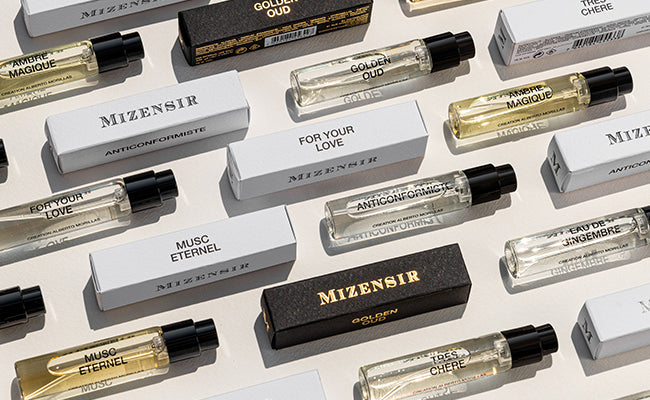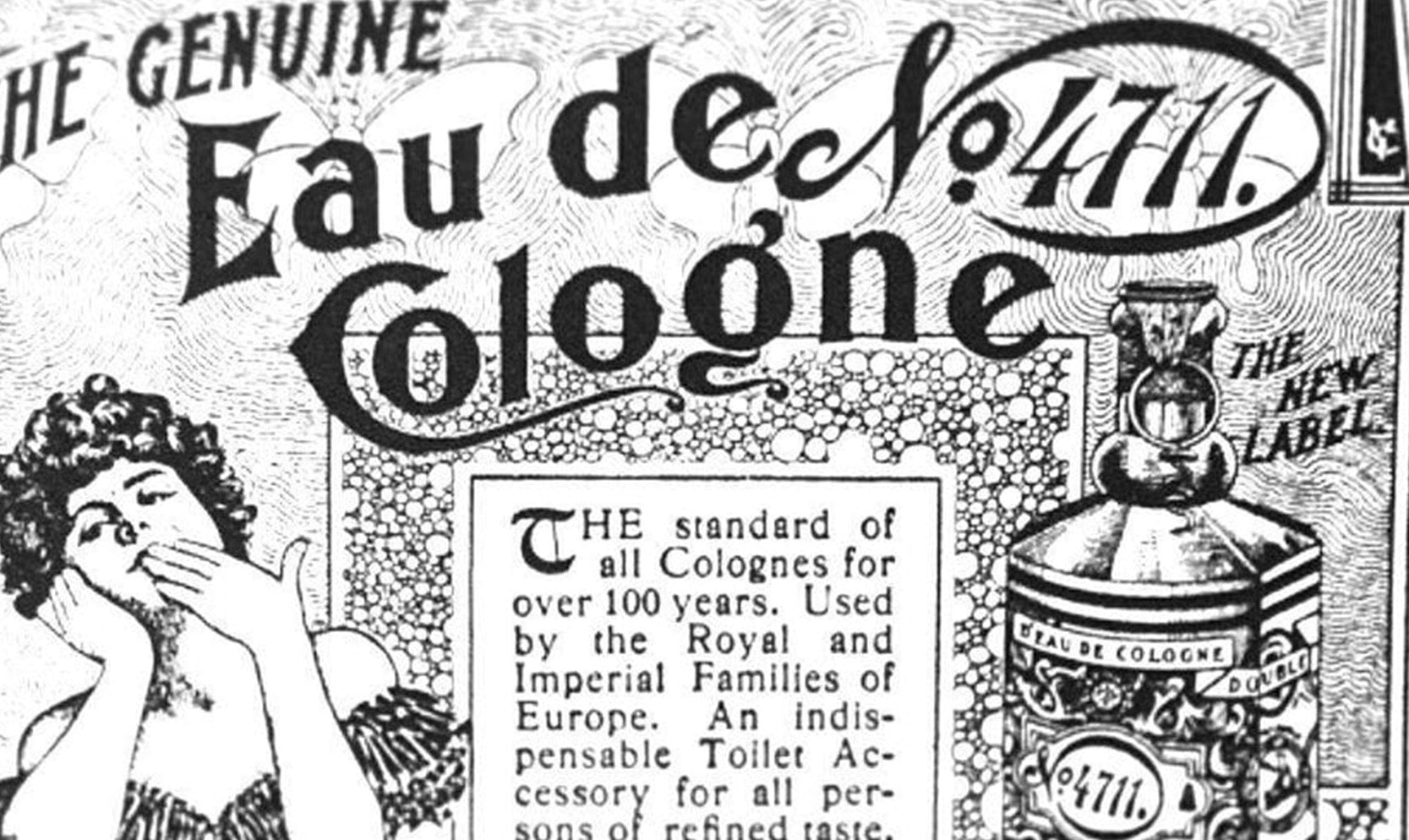Classic of classics and unisex for centuries, Cologne is characterized by its citrus freshness. Long admired, it originated in Italy before generically and popularly assuming its current Rhenish name. Used therapeutically, it is no longer a purgatory in pharmacies, but a pillar of perfumery. An invigorating, joyful freshness to be rediscovered.
From Italy to Cologne
Land of citrus fruits, the peninsula developed volatile perfumes, notably at the convent of Santa Maria Novella in Florence, where monks prepared "waters". A famous Acqua di Regina was named by Catherine de Medici in 1533. L'Officina Profumo de Santa Maria Novella was created and opened to the public in 1612. Recipes multiplied and Latin names were declaimed, like the Aqua Mirabilis. Supposed to cure numerous ailments, these waters had many virtues. "It's a wonderful antidote to all kinds of venom, and an excellent preservative against bad air and the plague. It opens up obstructions of the liver and spleen with equal success, and cures the illnesses that result from them, such as jaundice, stinking breath and the like..."
Originally, these compositions could also be drunk, for the benefit of large sick bodies. Apothecary, Giovanni Paolo Feminis is said to have succeeded in obtaining the secret of their manufacture from nuns in Italy, and introduced it to the Rhineland in the XVIIIth century. In Cologne, his water became admirable (aqua mirabilis). The business was then developed by a Jean Marie Farina, perhaps a nephew of Feminis. Inheriting the formula, this family associated the water with the name of the city of Cologne, which saw the fame of its fragrance surpass that of its cathedral or carnival. In 1727, these waters were recognized for their virtues by the Cologne Academy of Medicine.
The story continues in Germany with the Mühlens bank and a recipe given as a wedding gift. The family began marketing it under a number: "4711, the real Eau de Cologne", a name due to the numbering of dwellings imposed by the French occupiers under Napoleon.

Eau de Cologne, 1811 bottle. | Farina family archives via Wikimedia
A fan of this water, the Emperor wore it in a long, upright bottle, scroll laid straight in his boots. Farina duck (soaked sugar) was also popular at the time. But when Napoleon imposed by decree in 1810 that the formulas of these "remedies" be divulged, manufacturers decided to forget the medicinal aspect and favored external use so as not to reveal their secrets.
In the XIXth century, businesses selling these scented waters were numerous in Cologne. By 1865, there were thirty-nine signs bearing the Farina name.
The story takes place in parallel in France. A member of the Farina family - the one who created the vertical bottle for Napoleon - opened a store on rue Saint-Honoré in 1806. Balzac said of this perfumer: "His fame is such that he can do without advertising." Succeeding him were the Collas couple, who sold the house to two cousins, who in 1862 founded the house of Roger & Gallet, which has since fallen into the L'Oréal fold. The new owner continues to manufacture these classic eaux de Cologne, including Jean Marie Farina, which has been produced since 1806.
À LIRE AUSSI Cologne
At Guerlain, several magnificent eaux have stood the test of time, including L'Eau du coq from 1894. In its remarkable bottle decorated with bees, L'Eau de Cologne impériale (1853) was composed by Pierre François Pascal Guerlain in honor of Empress Eugénie.
Created in 1916, the house of Acqua di Parma reinvents the Italian spirit of the Colognes, designing a yellow universe in homage to the Italian sun, then blue for the Mediterranean. Always in the limelight, citrus fruits are being rediscovered. This is the case with a Chinotto di Liguria, a bitter citrus fruit that is little-known outside the world of Italian soda enthusiasts.
Despite its qualities and renown at Roger & Gallet or Guerlain, eau de Cologne is often perceived as an inferior product or as a rubbing potion bought at the drugstore. Available in larger containers and without an atomizer, its concentration, often played in the minor key, can be used generously as a splash.
Over time, it became a minor genre in perfumery. When Jean Claude Ellena described it in his Que sais-je? he wrote: "Today, this product is linked to a gesture of comfort and hygiene often attached to the practice of sport."
Fraîcheur
L'eau de Cologne features a fresh head dosed with citrus. These so-called hesperidic notes are associated with the mythical garden of the same name (Sicily, for the Romans). For one of his twelve labors, Hercules had to steal apples from the aforementioned garden. These mythical fruits, a wedding gift to Hera, are more likely to be oranges. Bergamot, neroli, petitgrain (distillate from the branches and leaves of trees, often the bigaradier or bitter orange) and orange blossom perfume Colognes. With time and the discovery of new citrus fruits, their palette has broadened to include yuzu, kumquat... not forgetting that mandarin is Chinese.
In Diderot's Encyclopédie , Cologne is defined as a "spirit flavored with a large number of plants, and distilled on these aromatics". Ingredients include rosemary, lemon balm water, bergamot, neroli, cedar and lemon.
À LIRE AUSSI Hespéridé
The scent of Cologne is characterized by its citrus signature at the top , which dominates a fragrance enriched with the aromatic notes of lavender and rosemary. Their concentration is, in principle, the lowest percentage (between 2 and 5%). Next come eaux de toilette, then eaux de parfum and extracts (over 20%). In the United States, however, the term "Cologne" is more generic, and can refer simply to a perfume or eau de toilette.
Renouveau
Until the 1980s, cologne was less noble than perfume. Often sold in pharmacies, it can be rubbed in generously.
From a first wave of Colognes imagined by and for fashion designers, they (re)became trendy in the early 2000s. In the flower of his success, Helmut Lang set his nose to an original perfumery and chose to reinvent a Cologne in the year 2000 (relaunched in 2014). Maurice Roucel worked with the designer on the project for two fragrances with no gender mentioned, a rather masculine Cologne appellation and a feminine eau de parfum; both having 80% of their components in common. Maurice Roucel remembers that the designer wanted Cologne to evoke the scent of a companion after an embrace. Its composition is rather aromatic: lavender, rosemary, floral heart and powdery woody base.
After the success of Angel, Thierry Mugler arrived in 2001 where he wasn't expected with his Cologne, playing on the ambiguity of a fragrance without sex. An unbelievable Janusian being served as his communication medium, while his Cologne, an acidic green almost pop, dared to mix the classic scents of bergamot, neroli, petitgrain and orange blossom with a new accord christened "S" (for sex?), to elicit a touch of sensuality against a backdrop of white musks.
"Every great house must have a Cologne."
A beautiful creation by Alberto Morillas, who remembers: "I wanted to make a very fresh Cologne with an overdose of musk. The famous "S" molecule was a wink to bring back a note that some recognize immediately but others don't. With this Cologne, I wanted to prove that with an overdose it was as powerful as a perfume."
Cologne regained its prestige and a new aura. Numerous launches followed. In 2002, Comme des garçons imagines a Cologne series with Vettiveru, Citrico and Anbar. In 2003, Jean-Claude Ellena's Cologne bigarade at Frédéric Malle is very bitter orange, spiced with pink pepper and cardamom. In 2004 Dior launched a magnificent collection of Colognes (premices of Maison Christian Dior), with three opuses including an incredible Eau noire with fougère and licorice aromas composed by Francis Kurkdjian, as well as a white Cologne and a Bois d'argent by Annick Ménardo. Appointed in-house perfumer, François Demachy added a very citrusy Royal Cologne with bergamot, lemon, neroli and mint to the collection in 2010. According to the perfumer, "every great house must have a Cologne".
Chez Chanel figures in the collection of exclusives, a Cologne composed in 2007 by Jacques Polge: mandarin, bergamot, over neroli heart and floral base.
Francis Kurkdjian composed in 2009 for his eponymous house a Cologne to wear in the morning and one to wear in the evening. La matinale is all freshness: bergamot, lemon on a heart of white thyme, lavender and a slightly powdery neroli base. Eveningwear is more opulent and voluptuous, with notes of rose and honey, incense and benzoin. Thierry Wasser added a new chapter to the historic flagships with the perfumer's Cologne, in 2010. While it pays homage to a Calabrian orange blossom, it surrounds it with green notes and a zest of lemon and bergamot. Dominique Ropion for Frédéric Malle imagined an indelible Cologne, the opposite of the evanescent idea of a fresh fragrance that makes three little turns and then goes away. For the perfumer, the idea was to make the fragrance last over time, around an absolute accord of orange blossom, bergamot, lemon, rosemary and narcissus, to which he added a lot of musk to make it last longer.
Atelier Cologne tells stories on this theme and takes a tour of citrus: Blood Orange, Paradise Pomelo, Sun Bergamot, Intoxicating Citron. Waters flirt with the concept of Cologne at Hermès, to the iconic Eau d'orange verte, Jean Claude Ellena has added Colognes around pink grapefruit and (exquisite) white gentian. According to the perfumer: "By putting colognes back in the saddle, as I did with Hermès and Frédéric Malle, I wanted to reconnect with the aristocratic image of eau de Cologne; something that seems right with our times, when a form of new aristocracy is in place. As a man of the left, I'm aware that there's a new aristocracy out there, not based on land ownership or republican merit, but on what is sometimes immediate wealth, on appearances." He defines it this way: "Simplicity, immediacy, freshness, non-genre of purpose. She shouldn't be stubborn."
Aujourd'hui
This year 2019 is shaping up to be a Cologne year. Mugler relaunches its icon with a colorful collection and five heritage Colognes to mix and match: Love You All, Run Free, Come Together, Take Me Out, Fly Away. The brand continues to bring a pop dimension to Cologne while reinventing a story around Alberto Morillas' creation.
For Louis Vuitton fragrances, Jacques Cavallier-Belletrud imagined Colognes to be worn in summer. Sun Song, with orange blossom and lemon. Cactus Garden, around mate, bergamot and lemongrass (which isn't exactly lemongrass). Afternoon Swim, a citrus festival. The brand Couvent des Minimes launches new collections including botanical Colognes continuing the story of a 17thcentury botanist, Louis Feuillée. The Latin names feature the term water: Aqua Mysteri, Aqua Solis, Aqua Paradisi, Aqua Sacrae, Aque Nymphar. Appointed head of olfactory creation for the brand, Jean Claude Ellena will put his stamp and his nose to it.
ALSO READ Tips for not smelling like everyone else
For his personal brand, Mizensir, Alberto Morillas imagined Colognes, a White Neroli at first, and the addition of three novelties. Cœur de Cologne marries neroli, orange blossom, bergamot, lemon, liatris, musks, incense.
Aurélien Guichard, who is launching his brand Matière première this autumn, has composed a citron Cologne with spicy notes of black pepper and pink berry.
Classic of classics, Cologne has now rediscovered its piquancy and nobility. Fresh from the zeitgeist, it also has the immense advantage of not needing to be defined by gender. As a reminder of your past, you can still spray yourself generously with it in a big splash.

























